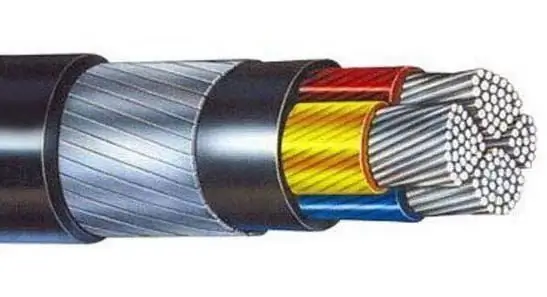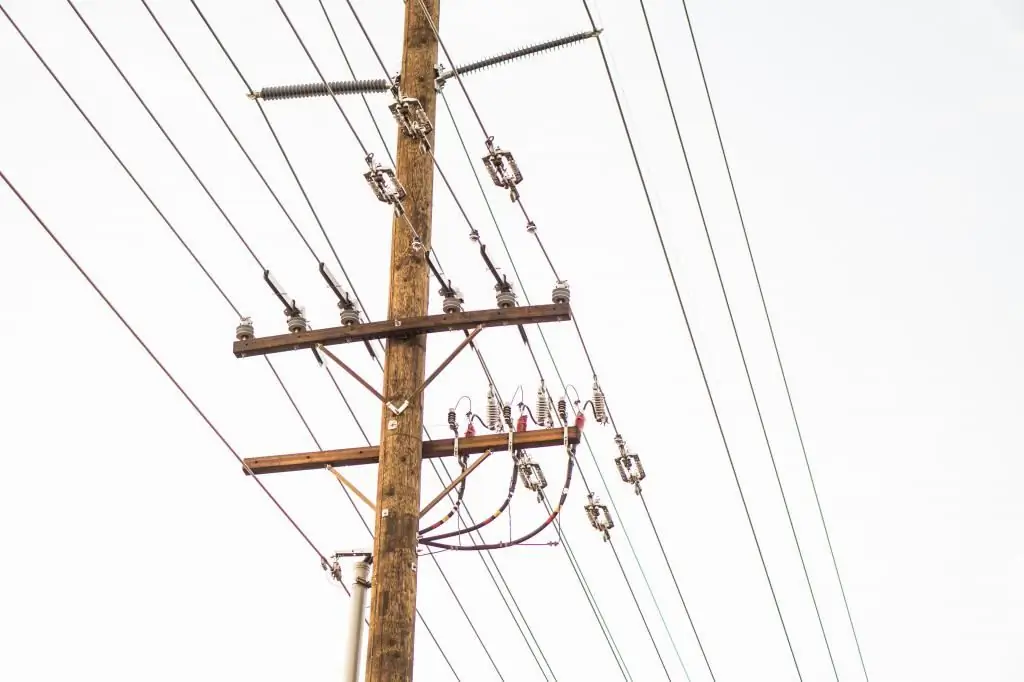2026 Author: Howard Calhoun | [email protected]. Last modified: 2025-01-24 13:10:41
Each of us at the mention of the expression "sewerage" before our eyes gets a system of collectors and pipelines, through which storm drains and household waste move. However, these are not the only communications that can be laid underground. Another option for an underground sewer network is a cable sewer.

Description
The described system is an underground network of tanks and channels in which telephone and electric cables are laid. Such a system may include pipes, as well as wells. The former are used for laying wires, while the latter are necessary for revision, replacement, repair and increase in power.
Cables can be laid in an open way, while pipelines are not used, they are replaced by building basements, tunnels and sewers. The lines in this case are strengthened with the help of special devices.

Designation of cable ducts
Cable ducting is necessary forprotection of wires from atmospheric phenomena and the load of the soil and road surface. It is used for the possible repair, replacement, and branching of telephone and electrical networks, while there is no need to open the soil and destroy the roadbed.
Varieties of cable sewerage systems
The most common duct classification is the one based on the piping method. Pipes are installed in pre-dug trenches. However, laying can also be trenchless, while the cable is above the ground, and the soil surface is not disturbed. Such installation is carried out using horizontal drilling technology.

Such systems may differ in the size of the section and the shape of the wells, the pipes themselves and the materials used in the manufacture of the elements. Wells can be plastic, brick and reinforced concrete. For such systems pipes from:
- asbestos;
- concrete;
- plastic;
- fiberglass;
- pitch fiber.
The most popular are plastic and asbestos. In some cases, instead of pipes, plastic blocks are used, which have several sections, called multi-channels.
Cable duct installation
Cable ducts are buried channels, which are located at a depth depending on the location of the material at the base of the pipes. The depth can vary from 40 to 200 cm. If we are talking about concrete pipes,then they can be laid even deeper, but plastic ones should be located at the smallest depth. The pipelines that are under the tram tracks are buried as much as possible, but the minimum - under the pedestrian zones. Under the roads, the elements are at an average depth.
The pipes have a slope of 4 mm per meter, this allows for a natural flow of water that may enter the channels. The cable and pipes between the wells should be in a straight line, but a slight offset is still allowed, it should not be more than 10 mm per meter of pipe. Manholes are located every 25-150 m, the final value depends on the cable laying scheme. Inside large collectors and basements of buildings, no cable is laid in pipes, as the wires are pulled along consoles here.

Cable ducting may provide for the presence of several tubes in one trench, while the voltage of the wires should be the lowest in those that are closer to the surface of the earth. The most suitable diameter is considered to be 100 mm, but in the past 15 cm pipes were used, in which it is more difficult to lay the cable. Telephone and electric cables should not be in the same bundle.
Device of manholes
Management wells for cable-type sewerage are mounted using the same technology as conventional sewage wells. They are containers with a bottom, the upper part of which is closed with a hatch, a neck is installed between it and the well. In the side walls arespecial openings for the exit and entry of the pipe with cables. Most of these tanks have a double system of hatches, the inner of which has a secret lock, the key to which is only available to the owner of the well.
Depending on where the cable network is located, wells can be:
- through;
- station;
- separating.

The first variety is installed on straight sections or in those places where the deviation from a straight line does not exceed 30 °. As for station and rotary wells, they should be located near buildings or at network bends, respectively. Separation wells are located at the outlet or approach points of several channels.
What else you need to know about manholes
Construction of cable ducts may involve the installation of wells of different sizes, they must be spacious so that they have the opportunity to work with cable and install equipment. Well tanks are made of different materials, but recently plastic products with stiffeners have been increasingly used. This is especially true for conditions where the load is not so great. For example, in the cable duct of the private sector, you can find well models of the KKT-2 type, its diameter is 136 cm, equipment can be installed in it.
Working on cable ducts: using cable with copper conductors
Cable ducting that will use cable with copperconductors, provides for the need to install a stocking of galvanized steel on the soldered end of the cable. A wire blank will be fixed for it. Cable laying is carried out according to a certain technology, it provides for fastening the drum with a cable on devices such as jacks or trolleys.
This work is carried out from the side of the receiving well. The cable is fed at the top of the drum, and at the entrance to the channel there must be polyethylene bushings or cable elbows. In the receiving well, the drawing of the wire blank with the cable begins, while at the supply well, the tension from the cable drum is constantly monitored. When the laying in the span ends, the ends are checked for tightness and stacked on the consoles. Cable laying in cable ducts in winter can be carried out at a temperature of at least 10 °C, while if a lead sheath is used, the ambient temperature can be -20 °C.

Features of double wall pipes
Double-walled cable ducts have high ring stiffness, they are able to withstand impressive mechanical loads, which is especially true for corrugated products. The pipes have good flexibility, with the help of them you can bypass obstacles along the route.
You can operate them in a wide temperature range, and the presence of special accessories allows you to form tracks of any complexity. These conduits are available in lengths from 35 to 150 m and are supplied inbays and have a nylon broach. Even at low temperatures, they remain elastic, and the minimum bending radius is 8 diameters.
Conclusion
If it is necessary to install a well in a pedestrian zone, the estimated load on the container, which is 10 tons, should be taken into account. As for the roadway, this parameter is increased to 80 tons.
Recommended:
Cable-stayed systems: device, advantages, features and disadvantages

Let's give definitions of cable-stayed and hanging systems, touch on their pros and cons, features and varieties. Next, let's talk more about cable-stayed and suspension bridges, considering their design, history, advantages and disadvantages
Aluminum cable: description, types, characteristics

Currently, people are very actively using wires, cables, etc. The main purpose of these elements has become the transmission of electricity. In everyday life, aluminum cables are the most common type of steel
Cable lug. Features of modern models

An article about what a cable lug is used for in modern production. What features does this design have, how can it be useful for ordinary users?
Installation of the cable line. Methods for laying cable lines

The article is devoted to the installation of cable lines. The most common ways of laying such lines are considered
Cable manufacturers: types of cable, list of manufacturers, rating of the best, product quality, addresses and customer reviews

Cable is such a demanded product that it is manufactured in any state. Wires are found in rooms, the ground, industrial facilities and even air. If a country is not able to guarantee itself a similar product, it is worthless. The article deals with domestic cable manufacturers

